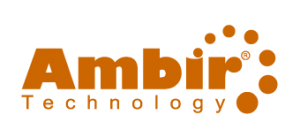3 Digital Health Trends Coming Soon To A Doctor’s Office Near You

Digital healthcare is revolutionizing how we seek and receive medical treatment in ways we couldn’t have imagined just a generation ago. From new diagnostic and surgical techniques to the way patient information is stored and shared, digital health technologies are transforming every aspect of the healthcare field.
While some of the most cutting-edge technologies currently being explored may not reach patients for many years, a number of digital health advances are being implemented by hospitals and medical practices right now. We look at three trends coming soon to a doctor’s office near you.
Health tracker data
We love our FitBits, Garmins, other wearables and health tracker apps on our phones. They help us keep track of physical activity, report on the quality of our sleep, can analyze our diets and some programs even claim to monitor baseline health indicators such as resting heart rate, body fat percentage, and oxygen saturation.
The data captured by these gadgets and apps can be very valuable to healthcare professionals who traditionally rely on patients to self-report on issues such as activity and diet. Unfortunately, self-reporting is seldom accurate.
Having access to accurate, real-time data can help medical professionals offer better, more personalized care, and monitor long-term results to identify significant changes of areas of concern. In the not-too-distant future, except these apps to automatically send data straight to your personal digital health file at your doctor’s office.
Electronic Health Records & Digital Patient Registration
All that data we gather from our trackers needs somewhere to go. Increasingly hospitals, medical practices and provincial health authorities are implementing Electronic Health Records (EHRs). In an ideal system, your complete medical records, test results, diagnostic images, prescription history and more would be accessible to any doctor and hospital in the province (or even the country), helping reduce errors and allowing for more efficient and effective provision of service and treatment.
Many medical practices are taking electronic records keeping a step further by eliminating paperwork and digitizing forms. Any paper form can be handled electronically using a simple all-in-one system such as Ambir Technology’s nForm.
From patient registration information to test requisitions, the forms can be completed on the tablet device which also doubles as an e-signature pad, and delivered or stored electronically. No more lost paperwork, no need for patients to manually fill in the same information on multiple forms.
Virtual appointments
Imagine waiting for your appointment in the comfort and privacy of your own home instead of in an office surrounded by sick people, or being able to consult with a specialist hundreds of miles away, without any travel required.
With medical records, test results and diagnostic images now accessible remotely from anywhere, the need to meet with a doctor face to face is diminishing too.
Virtual appointments via live video chat can provide those in remote locations access to much needed medical services and can reduce the backlog and wait times for care, particularly in areas with doctor shortages.




Leave a Reply
Want to join the discussion?Feel free to contribute!